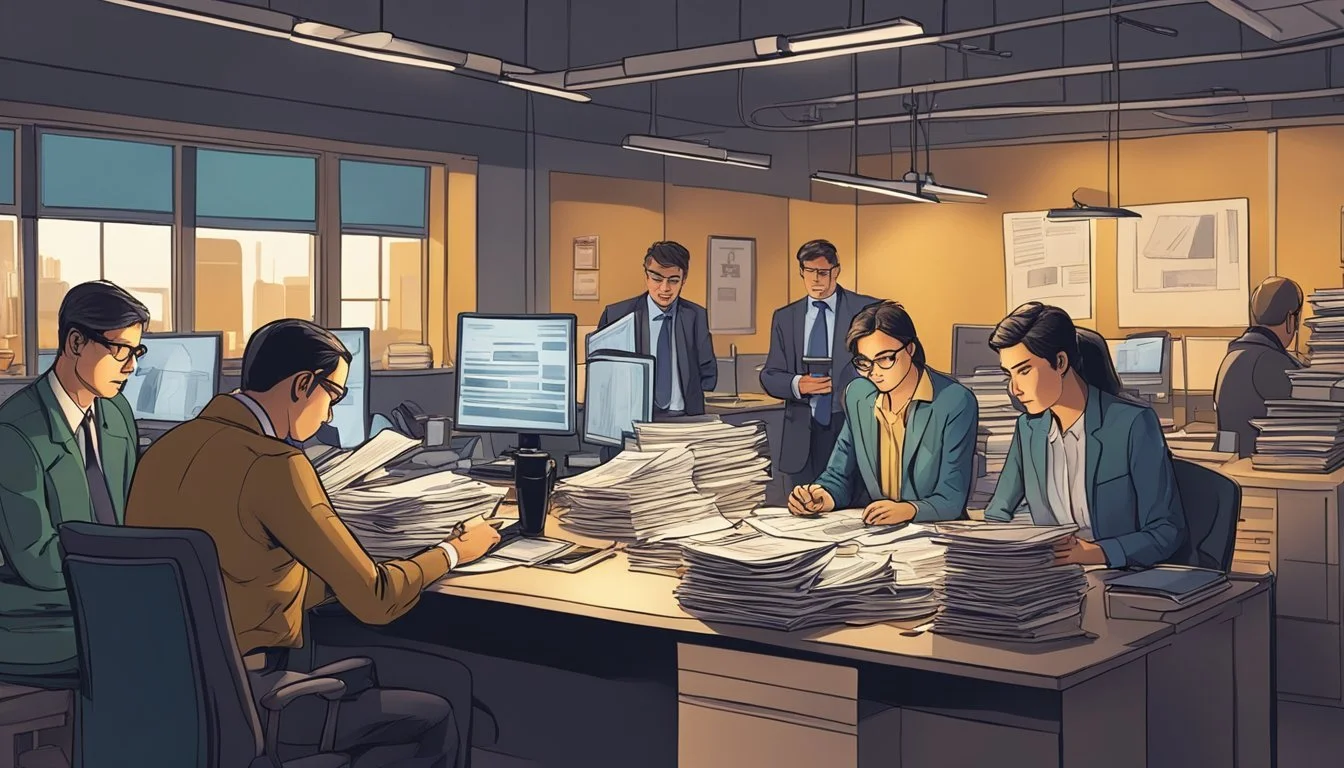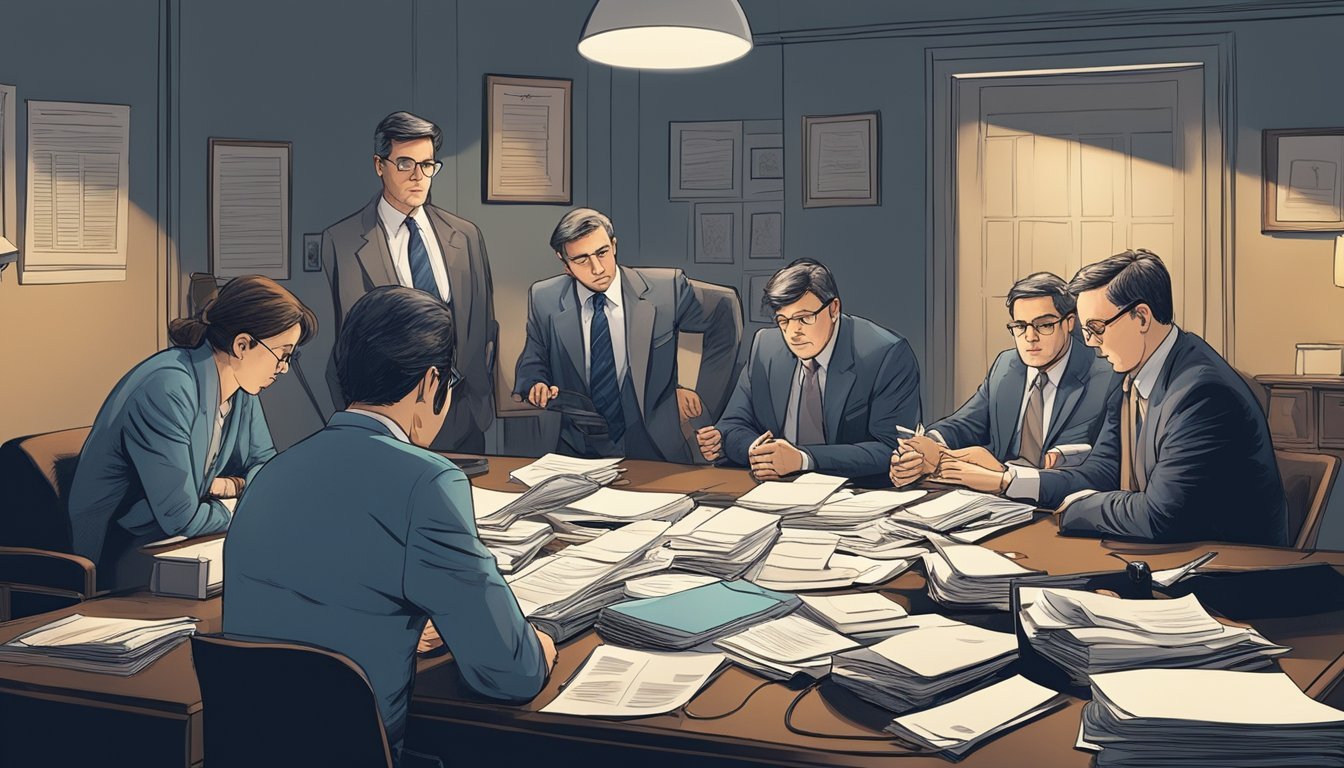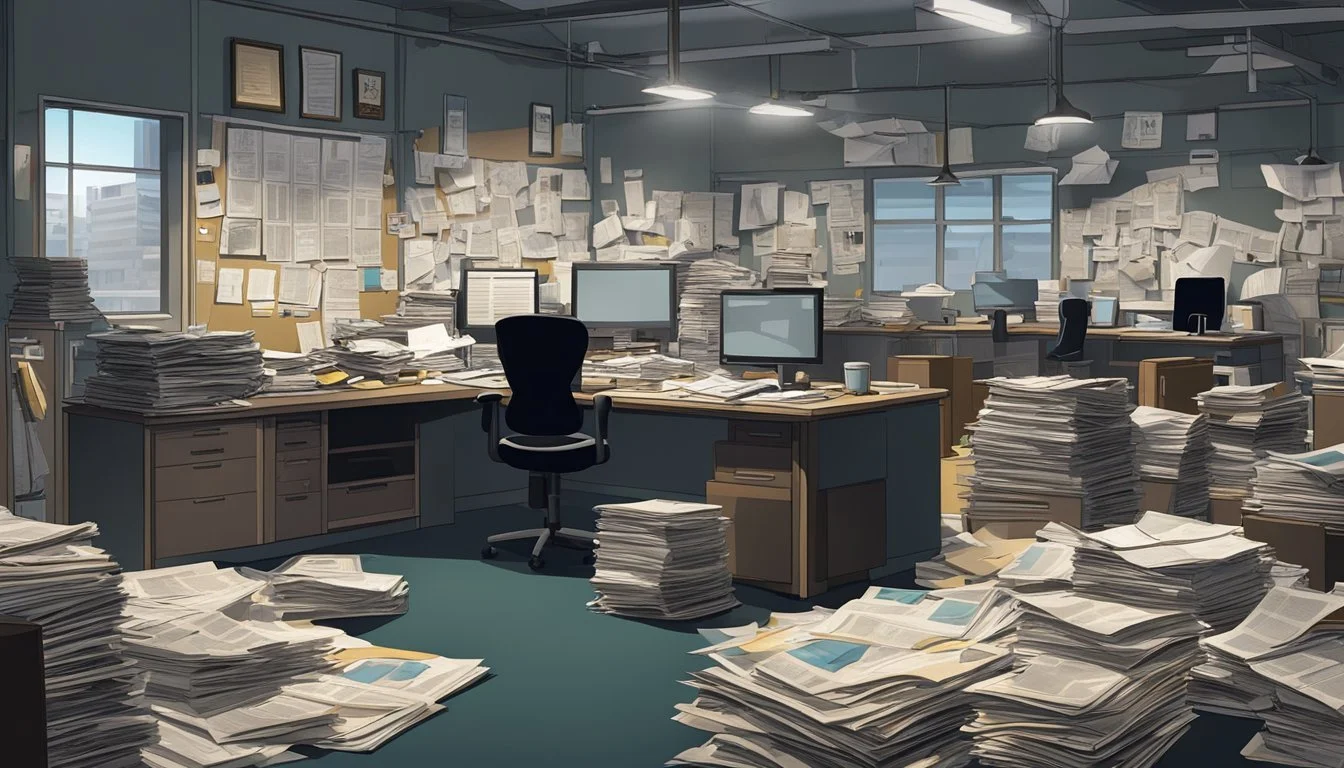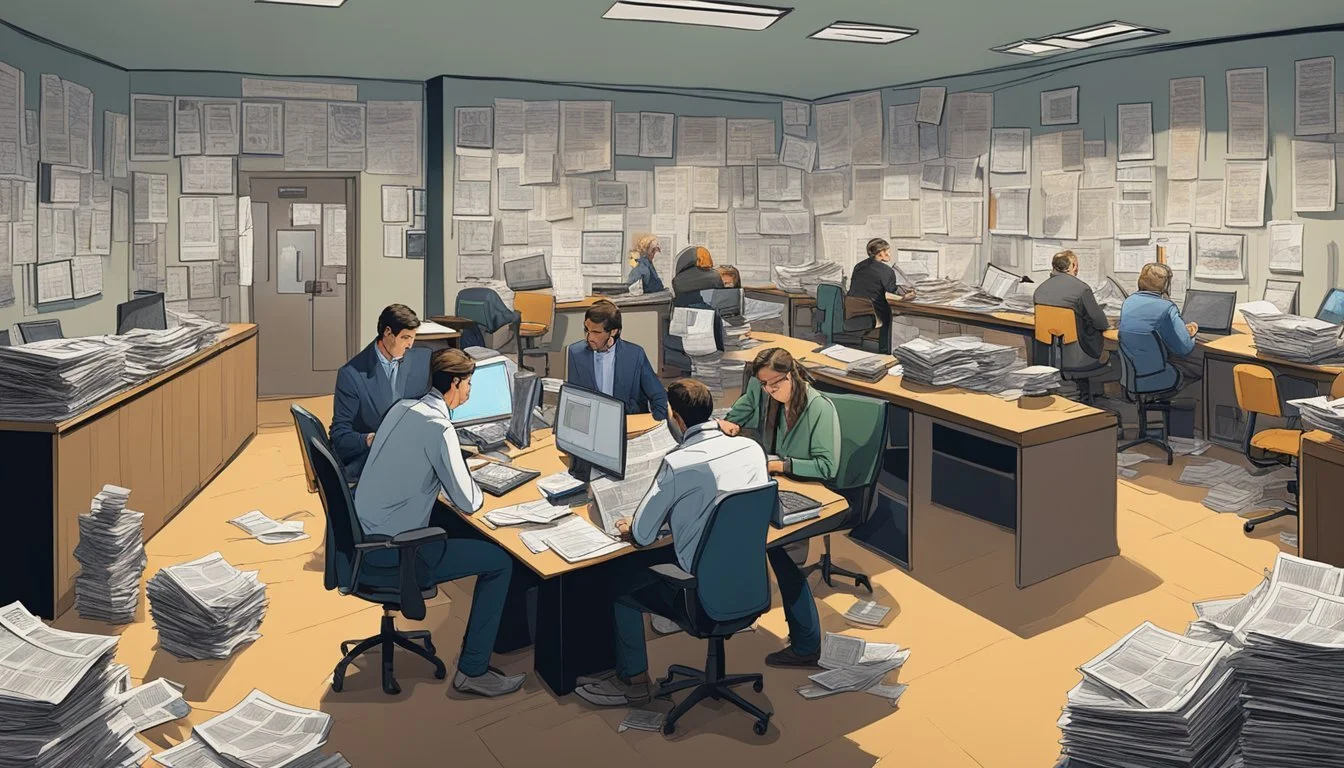Exposing Evil: The True Investigation Behind 'Spotlight'
Uncovering Systemic Abuse in Boston
In 2001, a team of investigative journalists at The Boston Globe embarked on a groundbreaking investigation that would shake the foundations of the Catholic Church. Led by newly appointed editor Marty Baron, the Spotlight team pursued a story of systemic child sexual abuse by priests in the Boston area. Their relentless work uncovered a widespread scandal that had been hidden for decades.
The Spotlight team's investigation exposed over 70 predator priests in the Boston area and revealed a pattern of cover-ups by church leadership. The reporters faced numerous obstacles, including resistance from powerful institutions and the challenge of convincing victims to share their traumatic experiences. Despite these hurdles, the team persevered, meticulously piecing together evidence and building a compelling case.
The impact of the Spotlight team's reporting was profound and far-reaching. Their articles sparked similar investigations around the world, leading to thousands of victims coming forward and numerous legal actions against the Catholic Church. The story of their investigation later inspired the Academy Award-winning film "Spotlight," which brought renewed attention to the importance of investigative journalism in uncovering hidden truths and holding powerful institutions accountable.
Origins of Spotlight
The Spotlight team at the Boston Globe emerged as a powerful force in investigative journalism. Its creation and evolution shaped its ability to tackle complex, sensitive stories with far-reaching impact.
The Birth of the Spotlight Team
The Boston Globe established its Spotlight Team in 1970 as a dedicated investigative unit. This specialized group of reporters focused on in-depth, long-term investigations into issues of public importance. The team operated independently from daily news coverage, allowing members to spend months researching and reporting on a single story.
Spotlight quickly gained a reputation for hard-hitting exposés. The unit tackled topics ranging from political corruption to organized crime. Its work often led to reforms and policy changes in Massachusetts and beyond.
Marty Baron and Spotlight's Direction
In July 2001, Marty Baron joined the Boston Globe as its new editor. He immediately took interest in a column about lawsuits involving a priest accused of sexual abuse. Baron urged the Spotlight Team to investigate further, sensing a larger story.
This directive marked a pivotal moment for Spotlight. The team shifted its focus to systematically examine allegations of widespread sexual abuse within the Catholic Church. Baron's leadership and vision helped steer the investigation towards uncovering a massive scandal.
Under Baron's guidance, Spotlight reporters meticulously gathered evidence and interviewed sources. Their work ultimately exposed decades of abuse and cover-ups, leading to global repercussions for the Catholic Church.
The Investigation Unfolds
The Spotlight team's investigation into clergy sexual abuse uncovered a vast, systemic problem within the Catholic Church. Their tenacious pursuit of the truth revealed a shocking pattern of cover-ups and institutional negligence.
Initial Research and Challenges
The Spotlight team began by examining court records related to Father John Geoghan, a priest accused of molesting numerous children. They faced significant obstacles as they delved into the sensitive topic. Many victims were reluctant to speak, and the Church fiercely guarded its secrets.
The reporters methodically built a database of accused priests, cross-referencing public records and Church directories. This painstaking work revealed a disturbing pattern: priests accused of abuse were often quietly transferred to new parishes.
Digging Deeper into the Church's Secrets
As the investigation progressed, the team uncovered evidence of a widespread cover-up. They obtained confidential Church documents that showed Cardinal Bernard Law had knowledge of abusive priests but failed to remove them from ministry.
The reporters interviewed victims, lawyers, and former priests. Each new lead exposed more cases and a deeper conspiracy of silence within the Church hierarchy.
Key Findings and Breakthroughs
The Spotlight team's persistence led to several crucial breakthroughs. They discovered that the Church had settled numerous abuse cases secretly, using confidentiality agreements to keep victims quiet.
A former priest named Richard Sipe provided vital information about the prevalence of sexual abuse within the clergy. His estimates suggested that 6% of priests had engaged in sexual abuse of minors.
The team's most significant finding was evidence that the Church's cover-up of abuse was systematic and went far beyond isolated incidents. This revelation transformed their investigation from a story about individual priests to an exposé of institutional failure within the Roman Catholic Church.
Profile of the Spotlight Team
The Spotlight team at the Boston Globe consisted of dedicated journalists who worked tirelessly to uncover the truth about clergy sexual abuse. Their collaborative effort and investigative skills were crucial in exposing this widespread scandal.
Editorial Leadership and Dedication
Walter Robinson led the Spotlight team as editor. His experience and guidance were instrumental in steering the investigation. Robinson pushed his team to dig deeper and pursue leads relentlessly. He fostered a culture of thorough fact-checking and ethical reporting.
Ben Bradlee Jr., as deputy managing editor, provided crucial support to the Spotlight team. He shielded them from external pressures and ensured they had the time and resources needed to complete their work.
The leadership's commitment to uncovering the truth, despite potential backlash, set the tone for the entire investigation.
Investigative Journalists and Their Roles
Michael Rezendes brought tenacity and sharp investigative skills to the team. He conducted key interviews and pored over court documents to piece together the extent of the abuse.
Sacha Pfeiffer excelled at gaining the trust of abuse survivors. Her empathetic approach encouraged victims to share their stories, providing crucial firsthand accounts.
Matt Carroll focused on data analysis. He created databases to track priest assignments and allegations, helping reveal patterns of abuse and cover-ups.
Each journalist's unique strengths complemented the others, creating a formidable investigative unit.
The Collaborative Effort in Exposing the Truth
The Spotlight team's success stemmed from their collaborative approach. They met regularly to share findings, discuss leads, and strategize next steps.
Team members cross-checked each other's work, ensuring accuracy and thoroughness. This peer review process strengthened their reporting and helped withstand scrutiny.
The journalists divided tasks based on their strengths but remained flexible. They often worked long hours, driven by a shared commitment to uncover the truth.
Their collective effort allowed them to tackle the complex, widespread nature of the clergy abuse scandal effectively.
Impact and Reactions
The Boston Globe's Spotlight investigation into clergy sexual abuse sent shockwaves through the Catholic Church and society at large. It sparked widespread reform efforts and brought long-hidden truths to light.
Global Influence of the Findings
The Spotlight team's reporting reverberated far beyond Boston. News outlets worldwide began investigating similar abuses in their regions. The Globe's work earned a Pulitzer Prize for Public Service in 2003.
Numerous countries launched their own inquiries into clergy abuse. Ireland, Australia, and Germany were among those that uncovered widespread misconduct. The investigation prompted victims across the globe to come forward with their stories.
Many dioceses faced bankruptcy due to abuse settlements. The scandal's financial toll on the Catholic Church reached into the billions of dollars.
The Church's Response to the Allegations
Initially, Church leaders struggled to address the scandal effectively. Some bishops attempted to downplay the extent of the abuse. Others, like Cardinal Bernard F. Law of Boston, faced intense criticism for their handling of abusive priests.
The Vatican eventually acknowledged the crisis. Pope John Paul II called American cardinals to Rome for an emergency meeting in 2002. The U.S. Conference of Catholic Bishops adopted a zero-tolerance policy on abuse.
Many dioceses implemented stricter background checks and reporting procedures. Some created victim support programs. However, critics argued these measures came too late.
Victims' Perspective and Society's Outlook
For many victims, the Spotlight investigation validated their long-silenced experiences. Support groups saw increased membership as more survivors felt empowered to speak out.
Public trust in the Catholic Church plummeted. Mass attendance declined in many areas. Some Catholics left the faith entirely.
Society's view of institutional power shifted. People became more skeptical of authority figures and more willing to question cover-ups. The scandal highlighted the importance of investigative journalism in exposing wrongdoing.
Schools and youth organizations re-evaluated their child protection policies. Many implemented stricter guidelines for adult-child interactions and abuse reporting.
Media and Cultural Resonance
"Spotlight" captivated audiences and critics alike, sparking important conversations about investigative journalism and institutional abuse. The film's portrayal and subsequent accolades elevated public awareness of the Boston Globe's groundbreaking work.
Spotlight's Portrayal in Media and Film
"Spotlight" brought the Boston Globe's investigation to life on screen with remarkable accuracy. The film's stellar cast, including Michael Keaton, Mark Ruffalo, and Rachel McAdams, delivered powerful performances that resonated with viewers. Director Tom McCarthy and writer Josh Singer meticulously recreated the newsroom atmosphere and investigative process.
Liev Schreiber's portrayal of editor Marty Baron and Stanley Tucci's role as attorney Mitchell Garabedian added depth to the narrative. The film's focus on the journalists' methodical work rather than sensationalism earned praise for its authenticity.
Award Recognition and Public Discourse
"Spotlight" garnered significant acclaim during the 2016 awards season. The film won the Oscar for Best Picture at the 88th Academy Awards, beating out strong contenders. It also secured the award for Best Original Screenplay, recognizing McCarthy and Singer's skillful storytelling.
The film's success at the Oscars amplified its impact on public discourse. It reignited discussions about the importance of investigative journalism and the ongoing issue of institutional cover-ups. "Spotlight" became a cultural touchstone, inspiring renewed interest in the role of journalism in uncovering societal injustices.
Legal and Ethical Considerations
The Spotlight investigation navigated complex legal and ethical terrain as it exposed decades of abuse and cover-ups within the Catholic Church. Journalists faced significant challenges in pursuing the truth while respecting legal boundaries and journalistic ethics.
The Legal Battles and Settlements
The Boston Globe's investigation sparked numerous lawsuits against the Catholic Church. Mitchell Garabedian, a key attorney, represented hundreds of victims in legal proceedings. The Archdiocese of Boston ultimately paid over $85 million to settle lawsuits from over 500 victims. Some priests, like Ronald H. Paquin, faced criminal charges and convictions for sexually abusing minors.
The Church initially fought to keep court records sealed, citing privacy concerns. However, the Globe successfully argued for public access, revealing a pattern of transferring abusive priests between parishes rather than removing them from ministry.
Journalistic Ethics and Responsibility
The Spotlight team adhered to strict journalistic standards throughout their investigation. They corroborated allegations with multiple sources and documents before publishing. The reporters faced ethical dilemmas in approaching victims, balancing the need for information with sensitivity to trauma.
The team consulted experts like Richard Sipe, a former priest and psychotherapist, to understand the scope of the abuse crisis. They also grappled with the potential impact of their reporting on the Catholic community and the broader public trust in institutions.
Defamation and Protection of Sources
Protecting sources was crucial, as many victims and whistleblowers feared retaliation. The Globe carefully vetted information to avoid defamation claims while still exposing wrongdoing. Some Church officials, like Jack Dunn of Boston College High School, later claimed misrepresentation in the film adaptation.
The reporters relied on confidential sources within the Church and legal system. They also used publicly available court records and Church documents to build their case. Attorney Eric MacLeish provided valuable insights and connections to victims, though his portrayal in the film was later disputed.
Continuing Legacy
The Spotlight investigation's impact extended far beyond Boston, reshaping journalism and empowering survivors worldwide. Its ripple effects continue to influence reporting, institutional accountability, and advocacy efforts today.
Spotlight's Influence on Future Investigations
The Boston Globe's Spotlight team set a new standard for investigative journalism. Their methods inspired reporters globally to tackle complex, systemic issues. Newsrooms across the U.S. launched similar probes into clergy abuse, uncovering cases in cities like New York and Dallas.
The investigation's success encouraged media outlets to invest in long-term, in-depth reporting. The Washington Post and The Miami Herald subsequently pursued major investigations, applying lessons learned from Spotlight's approach.
Spotlight's work also highlighted the importance of cultivating sources and building trust within communities. This became a cornerstone of investigative reporting techniques taught in journalism schools and newsrooms.
The Evolution of Investigative Reporting
Post-Spotlight, investigative journalism underwent significant changes. Digital tools and data analysis became crucial for managing large-scale investigations. Online platforms emerged as vital for both gathering information and disseminating findings.
Collaborative journalism gained traction, with newsrooms pooling resources to tackle expansive stories. The International Consortium of Investigative Journalists exemplifies this trend, coordinating global investigations into topics like offshore finance.
Social media transformed how reporters connect with sources and share stories. It also accelerated the spread of investigative findings, putting increased pressure on institutions to respond quickly to revelations.
Survivors Network and Ongoing Advocacy
The Spotlight investigation empowered survivors of clergy abuse to speak out. Organizations like SNAP (Survivors Network of those Abused by Priests) saw increased membership and visibility.
These groups continue to advocate for policy changes, pushing for statute of limitations reforms and mandatory reporting laws. Their efforts have led to numerous lawsuits against the Catholic Church and other institutions.
Survivor advocacy has expanded beyond the clergy abuse issue, addressing sexual misconduct in other sectors. This broader movement has sparked conversations about institutional accountability and victim support.
The Vatican has implemented reforms in response to ongoing pressure, including new reporting mechanisms and increased transparency. However, advocates argue more changes are needed to fully address the legacy of abuse.
Beyond 'Spotlight'
The Spotlight investigation's impact continues to shape journalism and accountability efforts. New challenges and opportunities have emerged, affecting how investigative teams operate and sustain their work.
New Challenges in the Digital Era
Digital technologies have transformed investigative journalism. Online databases and social media provide vast information sources for reporters. However, these tools also present new hurdles.
Fact-checking has become more complex in the age of misinformation. Investigative teams must verify digital evidence rigorously.
Data analysis skills are now crucial for uncovering patterns in large datasets. The Boston Globe's Spotlight Team has adapted by incorporating data journalists.
Privacy concerns have intensified. Investigative reporters must navigate stricter data protection laws while pursuing sensitive stories.
The Future of Investigative Teams
Collaboration is reshaping investigative journalism. News organizations increasingly partner on large-scale investigations.
Cross-border reporting networks tackle global issues. The International Consortium of Investigative Journalists exemplifies this trend.
Specialized skills are in demand. Teams now include data analysts, cybersecurity experts, and multimedia producers alongside traditional reporters.
AI and machine learning offer new investigative tools. These technologies can process vast amounts of documents and identify patterns human reporters might miss.
Sustainability of Long-Form Investigative Work
Funding remains a critical challenge for investigative journalism. Many newspapers have reduced or eliminated investigative teams due to budget constraints.
Non-profit models have emerged as alternatives. ProPublica and the Center for Investigative Reporting operate on donations and grants.
Reader-funded investigations are gaining traction. Some outlets use crowdfunding to finance specific projects.
Time pressures persist in the 24/7 news cycle. Investigative teams must balance in-depth reporting with the demand for quick stories.
Protecting sources has become more challenging. Digital surveillance tools threaten confidentiality, requiring new approaches to source protection.







